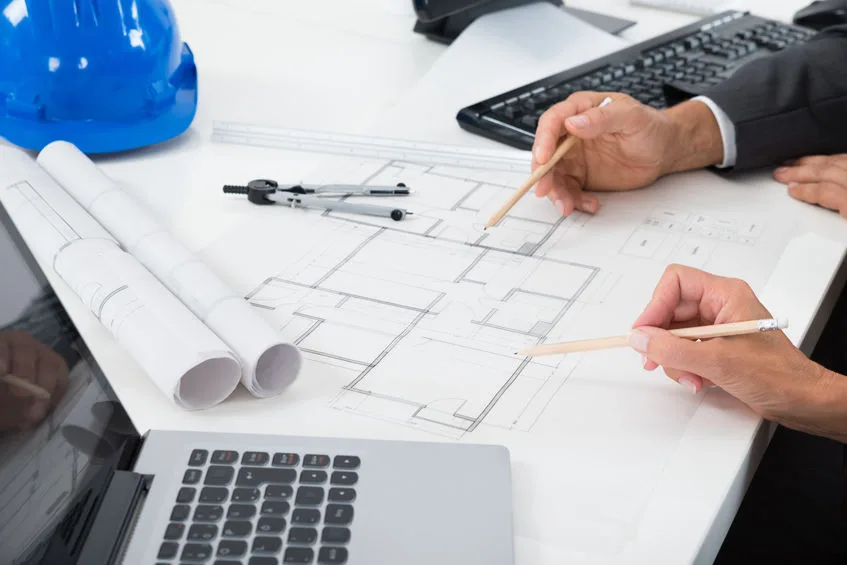Architect Checklist for New Commercial Projects
Architect Checklist for New Commercial Projects
Blog Article
Understanding the Diverse Occupation Paths Available for Aspiring Architect
As a hopeful Architect, you have a world of profession courses waiting for you. Whether you're attracted to conventional design or the subtleties of lasting design, there's a specific niche that straightens with your passions.
Conventional Design: Creating Structures and Frameworks
Standard style concentrates on designing buildings and structures that mix capability with visual appeal. As you explore this field, you'll value the detailed equilibrium in between type and function. You'll find out to attract ideas from historic designs, including components like symmetry, products, and workmanship. Your layouts can mirror social heritage, showcasing neighborhood practices while fulfilling modern-day demands.
You'll establish skills in preparing, model-making, and site analysis, permitting you to envision and connect your ideas successfully. Engaging with clients, you'll require to recognize their vision and convert it into possible designs.
In addition, constructing codes and sustainability techniques are essential in your work, guaranteeing your frameworks are risk-free and environmentally pleasant. As you expand in your profession, you'll find possibilities in property, industrial, and even reconstruction jobs, each offering one-of-a-kind obstacles. Accepting traditional style leads the way for a satisfying profession that admires the past while shaping the future.
Urban Planning: Forming Communities and Public Spaces
As an ambitious Architect, you can play an essential duty as an urban organizer, transforming just how communities connect and work. By employing neighborhood engagement methods, you'll guarantee that citizens have a voice in shaping their atmosphere. Plus, integrating lasting design concepts will assist develop spaces that not just meet today's requirements yet likewise safeguard the future.
Function of Urban Planners
While many might think of architects as the sole visionaries behind structures, city organizers play an essential role in shaping the broader landscape of neighborhoods and public areas. By working together with numerous stakeholders, you'll aid make parks, transport systems, and household areas that advertise social interaction and accessibility. Your competence in spatial layout and neighborhood dynamics allows you to picture future development while protecting cultural heritage.
Area Interaction Techniques
Effective area interaction techniques are vital for city coordinators to guarantee that the voices of homeowners are heard and valued in the planning procedure. To promote meaningful discussion, you need to prioritize open online forums and workshops where community participants can reveal their ideas and problems. Use studies and social media sites to reach a more comprehensive audience, making certain diverse perspectives are included. Teaming up with regional companies can improve trust and facilitate deeper links. It is necessary to give clear info concerning proposed tasks and decision-making processes, enabling residents to feel enlightened and empowered. By proactively listening and including responses, you'll create areas that mirror the community's requirements, inevitably causing even more successful and sustainable urban atmospheres. Welcome transparency and constant discussion for lasting effect.
Sustainable Design Principles
When developing urban rooms, integrating sustainable design concepts is important for creating environments that thrive both environmentally and socially. Take into consideration incorporating eco-friendly spaces, like gardens and parks, to enhance biodiversity and boost air high quality.
Designing with water conservation in mind is additionally crucial-- think of rainfall yards and permeable surface areas to take care of stormwater. Including community participants throughout the planning procedure assurances that the spaces you develop meet their demands and urge social interaction. By accepting these concepts, you'll add to vivid, lasting urban landscapes that benefit everyone.

Landscape Style: Developing Sustainable Exterior Environments
As you discover landscape design, you'll discover essential layout principles that create attractive and useful exterior spaces. Lasting methods play an important duty in making sure these environments grow while lessening environmental influence. Plus, you'll locate a range of career chances that allow you to make an actual difference in exactly how people engage with nature.
Layout Principles in Landscape
Understanding design principles in landscape architecture is vital for developing lasting exterior settings that integrate with nature. You'll require to contemplate elements like balance, percentage, and scale to ensure your designs feel cohesive and inviting. Additionally, pay attention to seasonal adjustments, making with products that match the surroundings year-round.
Sustainable Practices Review
Sustainable methods in landscape style not only focus on aesthetic appeals yet also focus on eco-friendly health and source preservation. You can develop areas that advertise dirt health, such as practicing and using organic materials permaculture concepts. Inevitably, these practices guarantee your styles profit both individuals and the atmosphere for years to come.
Job Opportunities Expedition
With a strong foundation in sustainable practices, landscape design uses a range of occupation courses that permit you to make a meaningful impact on the environment. You could work as a landscape designer, creating aesthetically pleasing and functional outdoor spaces, or specialize in ecological repair, aiding to restore broken environments. Urban organizers often collaborate with landscape engineers to develop environment-friendly rooms in metropolitan settings, enhancing city livability. If you're passionate concerning education and learning, take into consideration ending up being a landscape design educator, inspiring future generations. In addition, you could collaborate with nonprofits concentrated on ecological sustainability or take part in research to innovate brand-new methods. Each path not just forms lovely atmospheres but also cultivates a much healthier planet for future generations.
Sustainable Style: Focusing on Eco-Friendly Practices
As you explore your job in style, embracing eco-friendly methods can establish you apart in a competitive area. Sustainable style concentrates on creating buildings that reduce ecological effect while boosting resident wellness. By incorporating sustainable products, energy-efficient systems, and sustainable building methods, you'll add to a greener future.
Begin by getting knowledge of eco-friendly certifications like LEED or BREEAM, which can reinforce your qualifications. Take into consideration how natural light, air flow, and thermal performance can optimize style. Work together with designers and ecological specialists to innovate remedies that reduce waste and save sources.
Do not forget the value of community participation-- interesting regional stakeholders can motivate layouts that harmonize with the setting. As customers increasingly prioritize sustainability, your knowledge in eco-friendly practices will not only attract projects but also satisfy your enthusiasm for accountable design. Embrace this important element of the occupation, and view your profession thrive.
Historic Preservation: Protecting and Bring Back Cultural Heritage
While you start on your architectural journey, think about the crucial role of historical conservation in keeping our cultural heritage. This field focuses on the security and remediation of considerable buildings, websites, and frameworks that tell the stories of our past. By taking part in historical conservation, you'll help safeguard the building tradition that shapes community identification.
As a historical preservation Architect, you'll evaluate historic relevance and evaluate the problem of structures. You'll function carefully with chroniclers and guardians to guarantee genuine reconstruction methods are utilized. This occupation course permits you to mix creative thinking with study, allowing you to make solutions that respect original products and workmanship.
Your work not just adds to sustainability by reusing existing structures but likewise fosters a feeling of satisfaction within neighborhoods. Embracing this path will certainly help you end up being a guardian of background, preserving the stories and aesthetic appeals that improve our lives.
Interior Style: Enhancing Indoor Spaces
Historic preservation and indoor style both share a commitment to improving the constructed atmosphere, yet they concentrate on different elements. While historical conservation stresses preserving a structure's historic and cultural value, indoor design zeroes in on optimizing interior areas for functionality and visual appeals.
As a hopeful Architect, you'll locate that indoor style allows you to blend imagination with technical abilities. You'll create rooms that not just look excellent yet also promote comfort and efficiency. This field involves understanding exactly how light, color, and materials connect within a room, influencing state of mind and usability.
You'll work on various projects, from residential homes to commercial offices, my response ensuring that each environment meets the demands of its occupants. By focusing on customer experience, you can change insides into inspiring and functional rooms, making a substantial effect on just how individuals communicate with their surroundings. Embrace the opportunity to boost interior atmospheres and shape the way individuals work and live.
Industrial Design: Combining Capability With Appearances
Commercial style plays a necessary function in creating items that effortlessly blend visual appeals with functionality, making certain that what you utilize daily is not only aesthetically attractive but additionally functional. As an aspiring Architect, you can involve yourself in this area, concentrating on making everything from furniture to customer electronics. Your job includes understanding customer requirements, materials, and producing processes, allowing you to develop ingenious solutions that improve continue reading this everyday experiences.
In commercial layout, you'll frequently team up with producers, marketers, and engineers, ensuring that your layouts are not only attractive yet also viable. This occupation path offers a vibrant setting where imagination meets practicality, making it a rewarding option for engineers interested in forming the products of tomorrow.
Frequently Asked Inquiries
What Educational Accreditations Do I Need to Come To Be an Engineer?
To end up being an architect, you'll require an expert degree in architecture, typically a Bachelor's or Master's. Additionally, you'll need to finish an internship and pass the Architect Registration Examination to exercise legally.
Exist Accreditation Requirements for Various Architectural Job Paths?
Yes, there're accreditation requirements for numerous architectural courses. Architect. You'll need to pass tests, complete teaching fellowships, and in some cases seek specialized training, depending upon your picked focus, like landscape style, metropolitan layout, or historical preservation
What Software Program Skills Are Crucial for Designers Today?

Exactly How Can I Gain Practical Experience While Studying Design?
You can gain sensible experience by interning at architectural companies, getting involved in design competitors, volunteering for area jobs, or teaming up with classmates on real-world jobs. These chances boost your skills and construct important links in the market.
What Work Opportunities Exist Outside Standard Architecture Firms?
You can check out numerous task chances outside traditional style firms, like metropolitan preparation, interior decoration, landscape style, construction administration, property advancement, or perhaps roles in sustainability consulting. Each see it here offers special challenges and rewards.
Whether you're attracted to typical architecture or the nuances of lasting layout, there's a niche that lines up with your rate of interests.When making urban spaces, integrating lasting layout concepts is essential for producing environments that thrive both ecologically and socially.As you discover landscape architecture, you'll find essential design principles that produce useful and beautiful outdoor spaces.Comprehending style concepts in landscape design is necessary for developing lasting exterior settings that integrate with nature.In commercial style, you'll usually team up with designers, marketing experts, and manufacturers, making sure that your styles are not only beautiful yet likewise possible.
Report this page